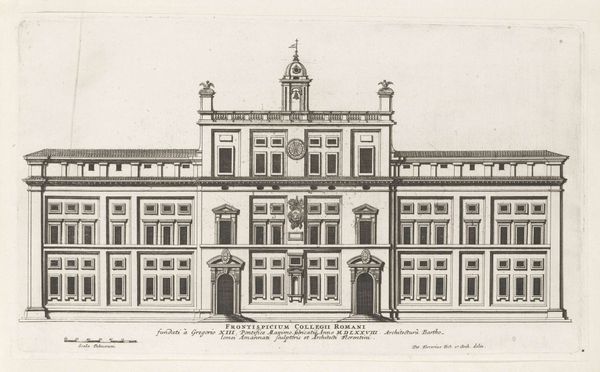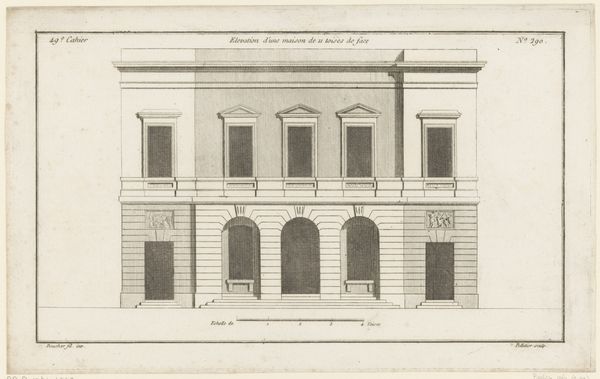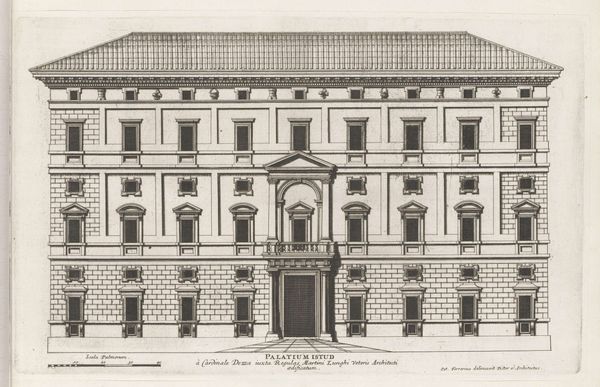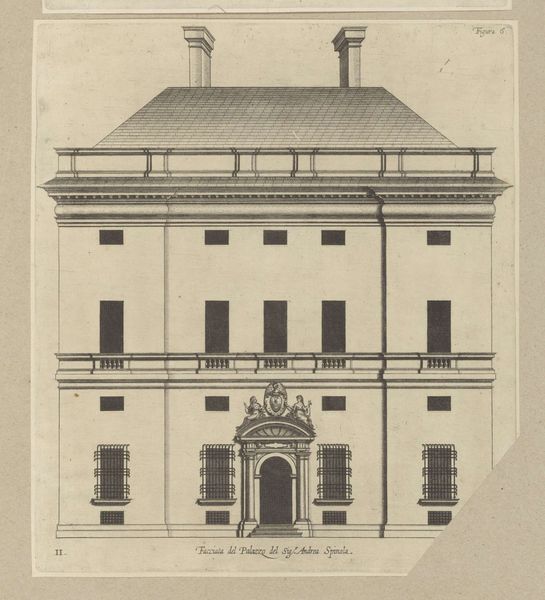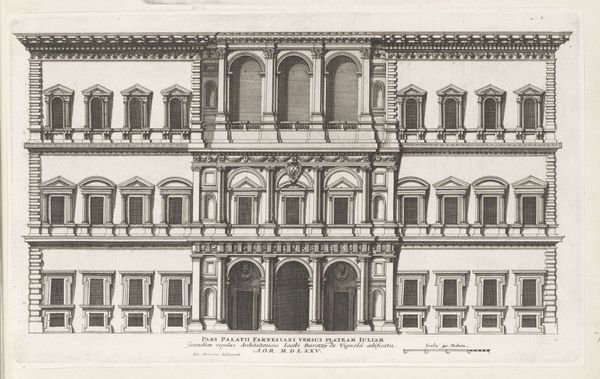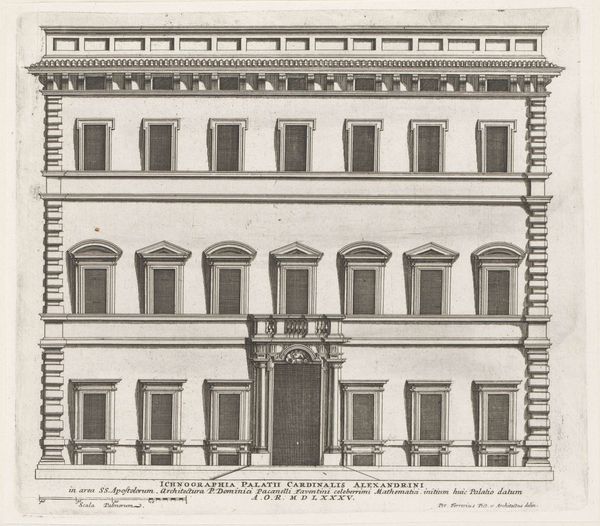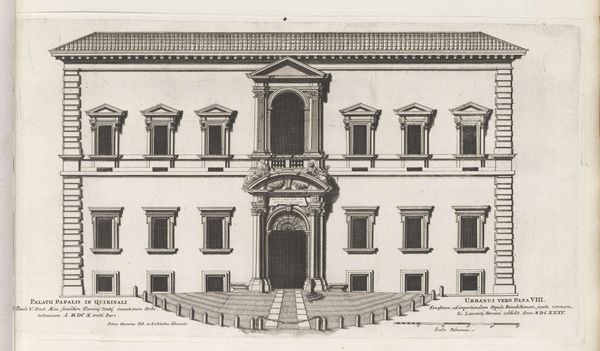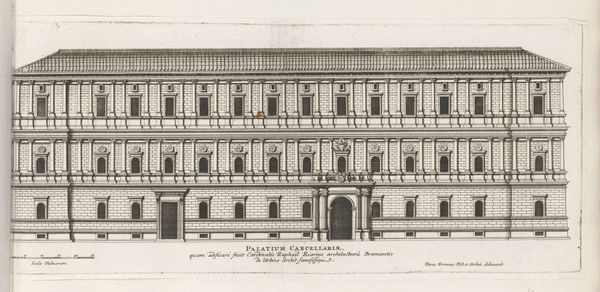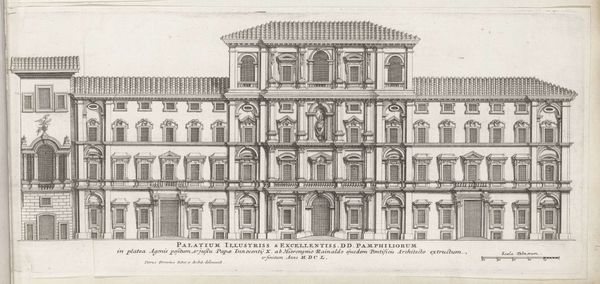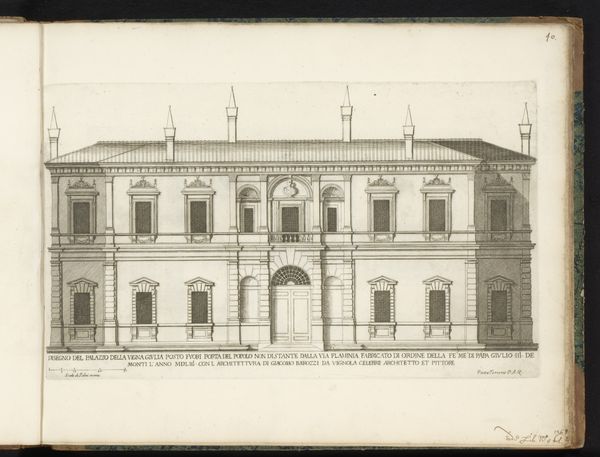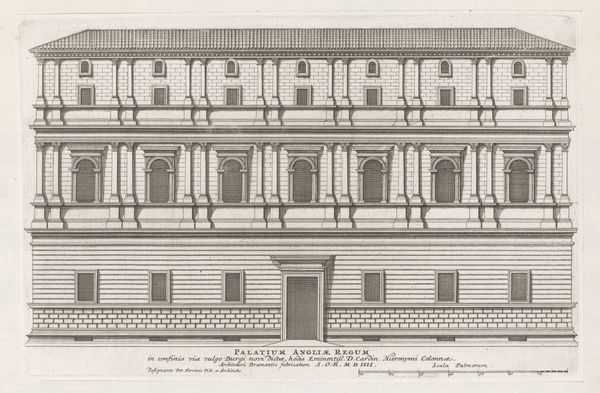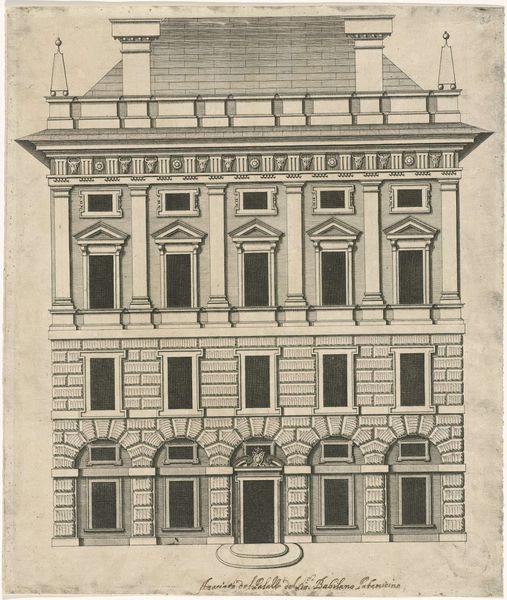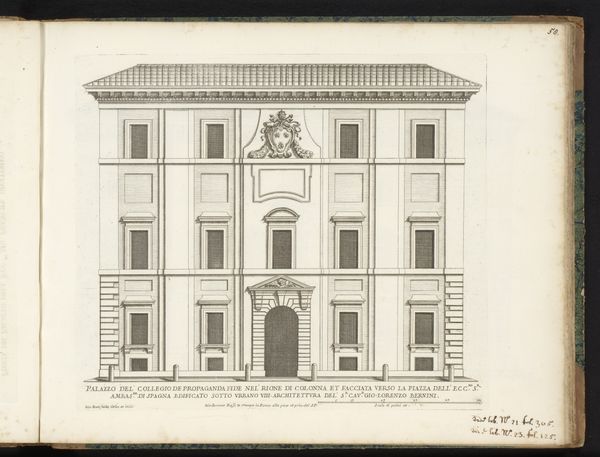
drawing, print, paper, ink, engraving, architecture
#
drawing
#
baroque
# print
#
landscape
#
paper
#
ink
#
engraving
#
architecture
#
historical font
#
building
Dimensions: height 257 mm, width 415 mm
Copyright: Rijks Museum: Open Domain
Editor: This is Giovanni Battista Falda's "Facade van Villa Giulia te Rome," created around 1655. It’s an architectural drawing, etched in ink on paper, presenting a very precise, almost sterile view of the villa. What stands out to me is how the architectural details seem to almost float on the page; what story do you think this facade is trying to tell? Curator: Well, let's consider the context. This drawing was created during the Baroque period, a time of significant papal authority and urban renewal in Rome. Falda's print functions, in part, as propaganda. By showcasing the Villa Giulia's perfect symmetry and classical motifs, he is participating in the construction of Rome as a renewed center of power and artistic patronage. Notice how the inscription directly below the image associates Pope Julius III to the villa. Editor: So it's less about representing the villa realistically and more about promoting a certain image of Rome, is that right? Like, this idealized image speaks volumes about the aspirations of the church at that moment? Curator: Exactly. The villa itself was conceived as a space for leisure and entertainment for the Pope. So in rendering it as an ordered architectural plan, the print mediates the lived experience, reinforcing social hierarchies and aesthetic ideals. How might viewers at the time have experienced this image differently compared to today? Editor: That's interesting, it definitely changes how I look at the piece. I guess I was too focused on my own interpretation, it's easy to overlook how an artwork functions within its historical moment. Curator: Precisely. By considering the social, cultural, and institutional contexts surrounding art, we uncover hidden narratives and power dynamics.
Comments
No comments
Be the first to comment and join the conversation on the ultimate creative platform.
